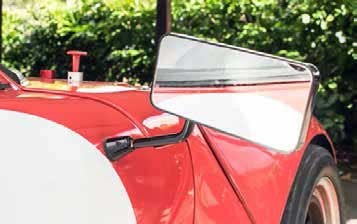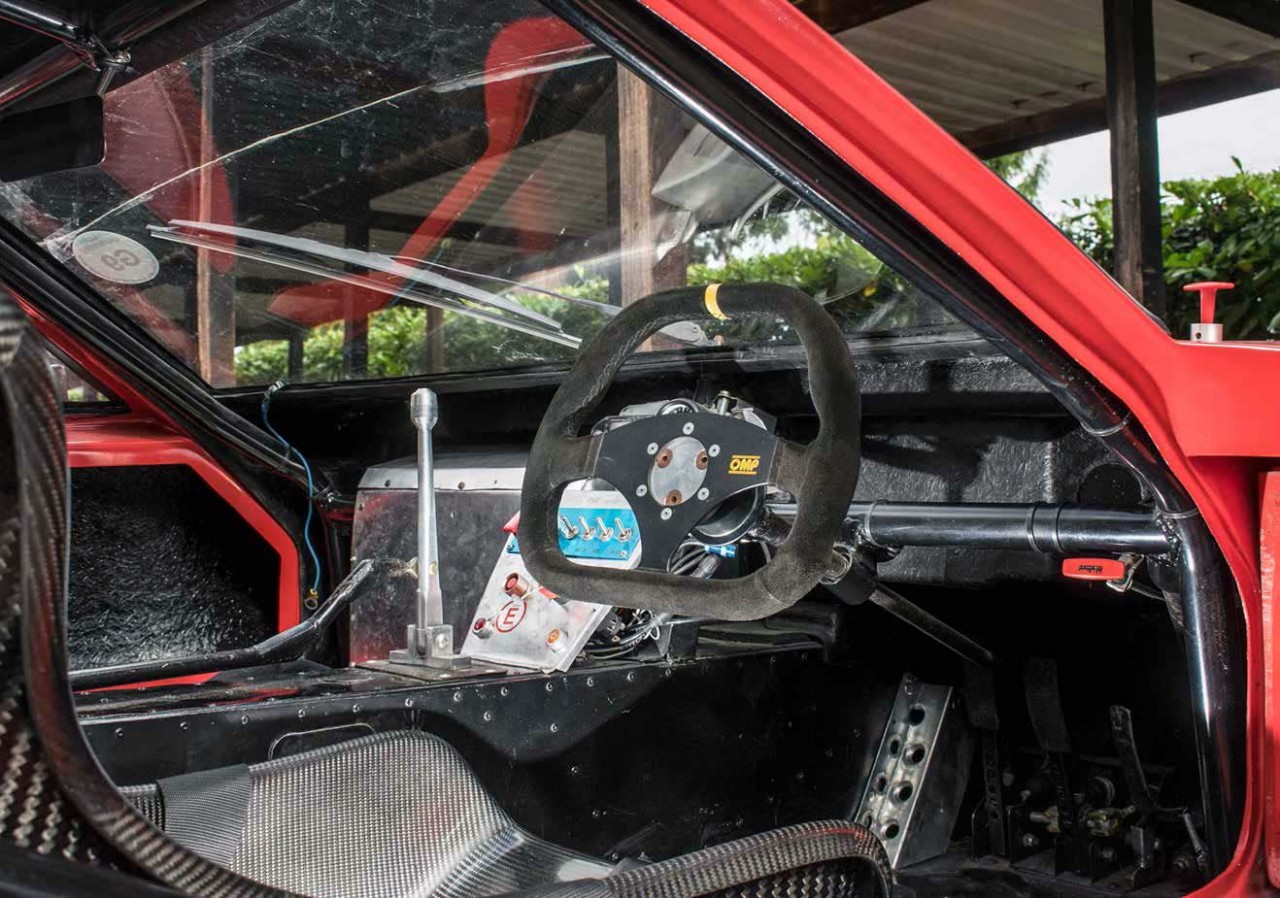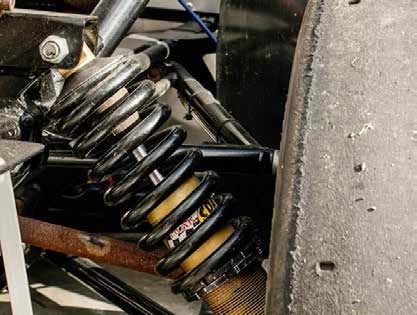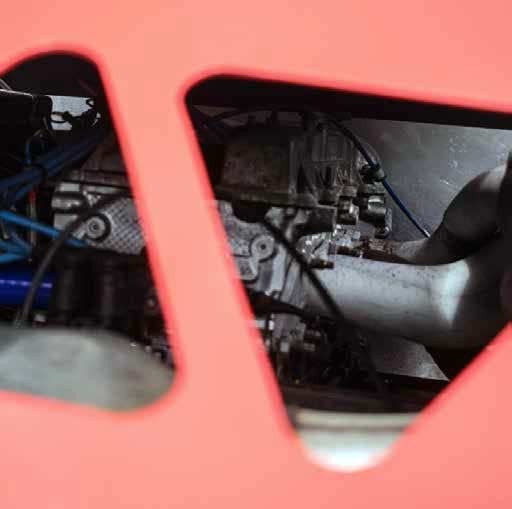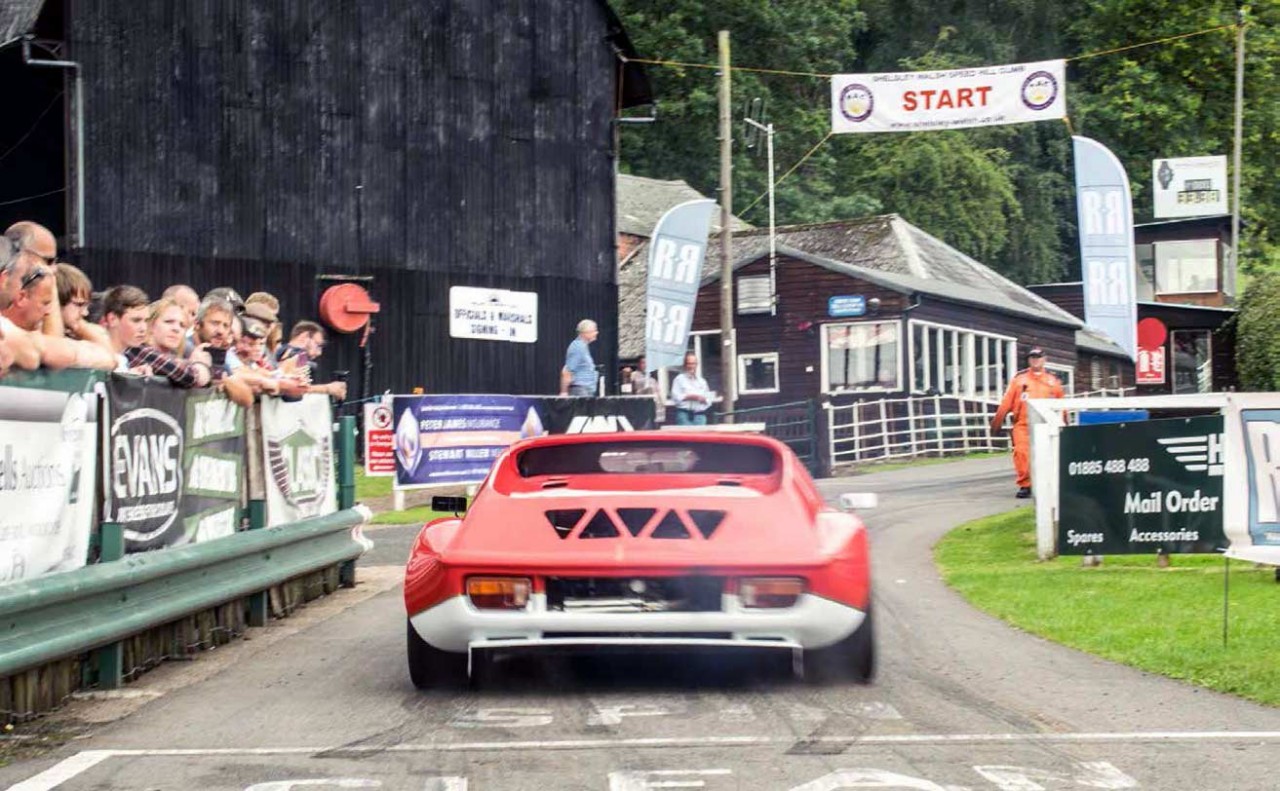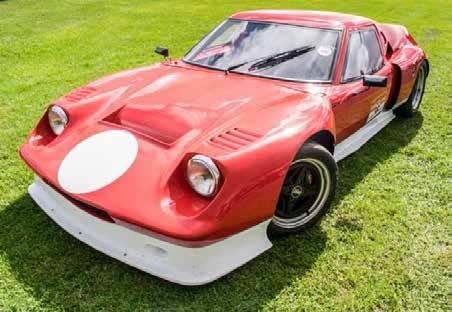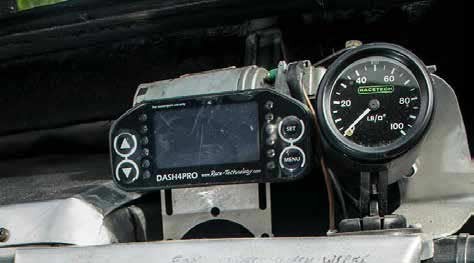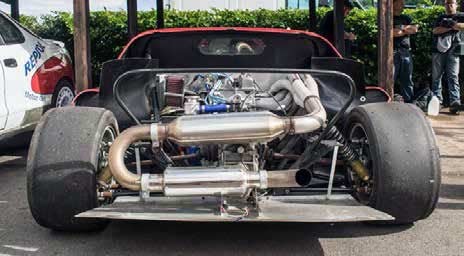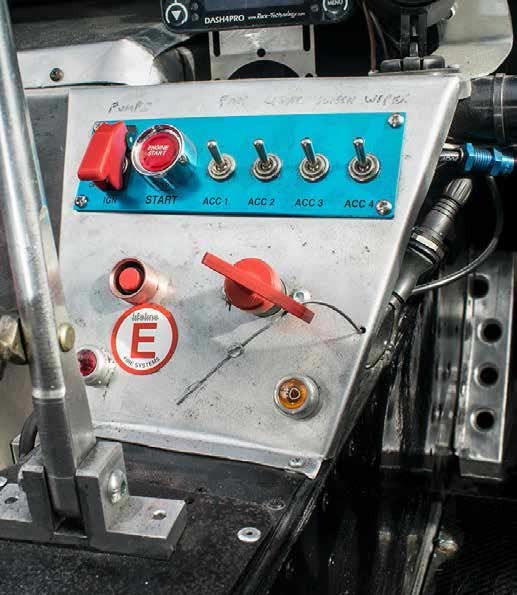‘WITH 360BHP THE EUROPA EATS MOST MODERN SUPERCARS’
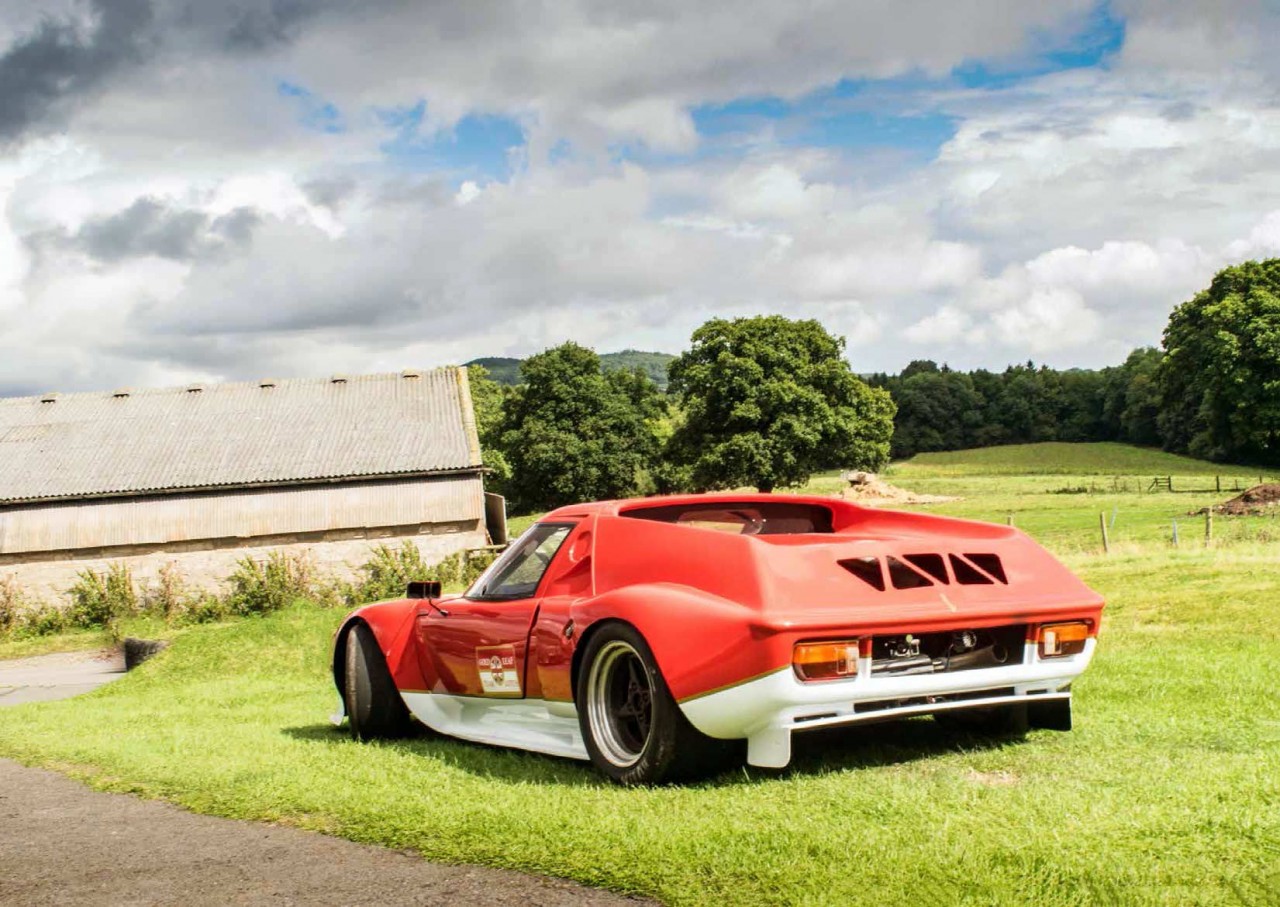
Look at it. Just… look at it, in all its red and gold, Gold Leaf-liveried glory. Don’t tell me you’re not jealous of this Banks Engineering Lotus 62S replica, which kicks ass and takes names to the tune of 360bhp, 240lb/ft and 720kg. I’ll give you a second to bust out a calculator and do the maths. Remember to show your working. Done? Good. Then you’ll have worked out that this righteous racecar delivers a power-to-weight ratio of 500bhp per ton. In other words, this hip high homage has the accelerative chops to stick it to almost every saccharine shouty supercar on the market today.
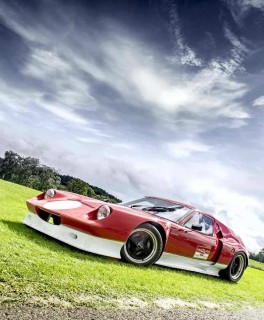
What’s more, amongst the right crowd, it draws at least as many stares as any Lamborghini or Pagani you care to name. We stumbled across the car at Shelsley Walsh hillclimb, where it was one of the guest cars at last summer’s Retro Rides Gathering, and the imposing 62S turned heads wherever it went.
Whether it was charging up the hill to the rat-a-tat-tat tune of its hard charging Duratec or simply reposing in the pits, everyone wanted their chance to gee and gawp. No one could blame them: it’s one awesome automobile.
You could be forgiven, then, for thinking that the owner, Stuart Deeley, has a long history in circuit racing. Not so. Stuart hails from a rallying background: he’s been competing since 1980 in everything from a Nissan Micra to a Mark 2 Escort to his current Group A Toyota Celica GT-4. He’s also three times ANWCC North West stage rallying champion, having lifted the title in 2000, 2002 and 2011. Suffice to say, he knows his stuff about driving on the rough.
Despite his gravel-spewing predilections, Stuart grew up dreaming of the Ford GT40 and, around 2003, he started thinking about real world alternatives. His ponderings soon led him to other period prototypes and it was only a short hop from there before he landed on the Lotus 62, a relatively obscure 1969 Appendix J Group 6 racer that Stuart views as ‘an all British equivalent to the GT40.’ Looking at his car, the resemblance is clear: there are the same swooping front wings, the same squant haunches and the same road-hugging build as the famous Le Mans winner. Having discovered Banks Engineering and their well renowned Type 47R and Type 62S replicas, Stuart placed an order. Later that year, his first 62S was ready.
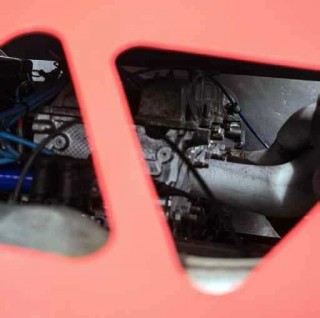
Finished in silver to commemorate its status as a 25th anniversary present, it was only a road car. Well, as ‘only’ as a mid-engined sportster with a spaceframe chassis, double wishbones all round and three times the torsional stiffness of the original Lotus cars can be. Not that it matters, as it wouldn’t stay standard for long.
You see, our man had experienced a eureka moment and immediately began to converge his major petrolhead interests. Yup, the Lotus was going rallying. ‘I like the shape, I like Lotus cars,’ Stuart explains, ‘it’s something unusual but something that can be very competitive. It’s got low weight, low drag, high engine performance and excellent handling: it’s everything that makes a good competition car.’ Having watched videos of the silver 62 harassing Escort Cosworths online, it’s hard to disagree.
Though the car retained its chassis and silver one-piece body, almost everything else was upgraded. The major changes included Spax dampers, AP brakes and a full complement of safety equipment. Oh, and the small matter of a 2.4-litre Ford Duratec four-cylinder engine built up to produce 360bhp, driving through a sixspeed Hewland sequential gearbox. Stuart calls this car heavy but, at just 820kg, the little Lotus is still comfortably lighter than its competition.
It was enough to produce a very quick and very distinctive rally car, capable of class-leading stage times. Highlights include winning the 2011 ANWCC North West rally championship and competing at King of the Hill and SOL Rally Barbados in 2013. Sadly, after seven years of yumps, jumps and class wins, the 62 was banned from British stage rallying overnight. ‘The MSA decided for various reasons that cars like the silver 62 weren’t allowed to run in rallying any more,’ Stuart explains. He’s referring to a 2012 ruling where privately built rally car ‘specials’ built around a spaceframe were deemed to no longer meet event safety requirements. ‘It was a shame. Spectators told me it made a nice change from the standard parade of Imprezas, Evos and Escorts: it was quite spectacular in a Scalextric sort of a way.’

Once again, Stuart reacted with a dose of ingenuity. He was frustrated, he still wanted to compete in a mid-engined, lightweight sports car and he wanted to keep bringing something different into competition. The natural response, of course, was to build up another Banks Engineering Lotus 62S, this time with a circuit racing focus. ‘I’m a petrolhead by nature,’ Stuart smiles, ‘and I enjoy building cars and testing them to the extreme, hence my interest in motorsport. I’ve not done much circuit racing and I’m not convinced I prefer it but it’s the only way to continue competing with this type of car.’
In 2012, Stuart bought another 62S rolling shell and set to work. After Richard Winter of Banks Engineering had finished the body and chassis, the car was transported to John Hardman to be completed. John added a full rollcage, transplanted the rally car’s engine and gearbox into the new 62 and finished building the car up over the next two years. ‘We’d learnt a lot from the rally car,’ Stuart explains, ‘so there wasn’t a huge amount we needed to differently the second time around, apart from tweaking weight distribution and my seating position. The only real frustration was how long it took us to get the car finished.’

Of course, there were some changes needed to translate the rally car concept into a successful upgraded. The major changes included Spax dampers, AP brakes and a full complement of safety equipment. Oh, and the small matter of a 2.4-litre Ford Duratec four-cylinder engine built up to produce 360bhp, driving through a sixspeed Hewland sequential gearbox. Stuart calls this car heavy but, at just 820kg, the little Lotus is still comfortably lighter than its competition.
It was enough to produce a very quick and very distinctive rally car, capable of class-leading stage times. Highlights include winning the 2011 ANWCC North West rally championship and competing at King of the Hill and SOL Rally Barbados in 2013. Sadly, after seven years of yumps, jumps and class wins, the 62 was banned from British stage rallying overnight.
‘The MSA decided for various reasons that cars like the silver 62 weren’t allowed to run in rallying any more,’ Stuart explains. He’s referring to a 2012 ruling where privately built rally car ‘specials’ built around a spaceframe were deemed to no longer meet event safety requirements. ‘It was a shame. Spectators told me it made a nice change from the standard parade of Imprezas, Evos and Escorts: it was quite spectacular in a Scalextric sort of a way.’
Once again, Stuart reacted with a dose of ingenuity. He was frustrated, he still wanted to compete in a mid-engined, lightweight sports car and he wanted to keep bringing something different into competition. The natural response, of course, was to build up another Banks Engineering Lotus 62S, this time with a circuit racing focus. ‘I’m a petrolhead by nature,’ Stuart smiles, ‘and I enjoy building cars and testing them to the extreme, hence my interest in motorsport. I’ve not done much circuit racing and I’m not convinced I prefer it but it’s the only way to continue competing with this type of car.’
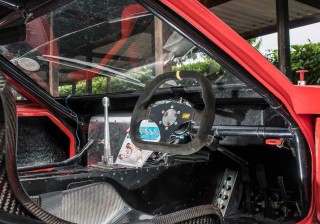
In 2012, Stuart bought another 62S rolling shell and set to work. After Richard Winter of Banks Engineering had finished the body and chassis, the car was transported to John Hardman to be completed. John added a full rollcage, transplanted the rally car’s engine and gearbox into the new 62 and finished building the car up over the next two years. ‘We’d learnt a lot from the rally car,’ Stuart explains, ‘so there wasn’t a huge amount we needed to differently the second time around, apart from tweaking weight distribution and my seating position. The only real frustration was how long it took us to get the car finished.’
Of course, there were some changes needed to translate the rally car concept into a successful racer, chief amongst which was a different approach to the bodywork. While the rally car used a single-part shell, the body of the racer forms a completely removable three part clamshell. It offers a number of advantages for a circuit racer: it’s easier to access the engine bay; body panels can be changed quickly in the event of damage; and you don’t need to rely on the bodywork for strength in an accident. Other changes include Image billet wheels, slick tyres and a quick steering rack.
Once the 2014 racing season arrived, it was time to get on track. Stuart chose the competitive BARC North West Sports Saloon Championship for his on-track debut and, after a toe in the water race in the rally car, hit the track in the all-new 62 towards the end of the season. Teething problems and contaminated fuel kept the car from being competitive but the potential was tantalisingly clear…
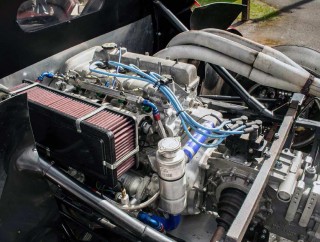
Since then, work and life have got in the way but, after a series of appetite-whetting runs up Shelsley Walsh last summer, Stuart is itching to get back behind the wheel. ‘I’d like to blow the cobwebs away. I don’t know if I want to sell it: once I’ve taken it out I certainly won’t want to! There are sprints at Aintree and Three Sisters this autumn and I’m hoping to run it there.’
Numbers fans will be well aware that we’ve only accounted for one of the cars: whatever happened to the other 62S? Don’t worry: it’s still sitting in the garage and Stuart is considering turning it back into a road car, with an eye on recreating a period Lotus 62 experience.
To that end, he plans to fit an early 2.2-litre Type 907 engine, a Lotus unit that is based on the modified Vauxhall engine used by the two genuine Lotus 62s, and a Citroen manual gearbox. ‘You know,’ Stuart adds as we conclude our chat, ‘I must be the only person in the world with two 62s in the garage!’ Still jealous? Yeah, I thought so…
LOTUS EUROPA DURATEC
Banned as a rally car for winning too much, it’s now a successful racer.
Technical data file specifications Lotus Europa Banks Engineering Type 62
ENGINE 2.4-litre Duratec built by John Hardman, fully lightened and balanced, with forged pistons, forged rods, forged steel crank, CNC-worked head, big valves, titanium caps, custom high lift camshafts, throttle bodies, Bosch injector, dry sump, XP3 oil, DTA electronics, aluminium bodied electric water pump, aluminium radiators, eight gallon aluminium fuel tank and custom four-into- one exhaust system with twin box silencers.
TRANSMISSION Hewland six-speed sequential gearbox geared to 150mph, lightweight 5.5 multi-plate clutch with machined billet bellhousing.
EXTERIOR Banks Europa three-piece fibreglass clamshell, Banks rollcage, aluminium bulkheads, heated and laminated windscreen and twin pack paint in Gold Leaf racing livery.
SUSPENSION Spax two-way adjustable coilover suspension front and rear, steering quick rack.
BRAKES AP Racing four-pot front and two-pot rear calipers with competition brake pads.
WHEELS & TYRES Image billet wheels, 15×9 inches front, 15×11 inches rear with Avon slick or treaded wet racing tyres.
INTERIOR Reverie carbon fibre seat, Schoth five-point harness, removable steering wheel, custom pedal box, electronic dash, Varley 25 battery and lots of added lightness.
‘HE’S BUILDING A ROAD CAR 62 REPLICA WITH A LOTUS 907 SLANT FOUR AND PERIOD CITROËN GEARBOX’
‘THE 2.4-LITRE FORD DURATEC MAKES AN EYE-WATERING 360BHP’
‘THE RALLY CAR WAS SO SUCCESSFUL THAT THE MSA BANNED IT’
‘IT CAN OUT ACCELERATE MOST SUPERCARS ON THE MARKET TODAY’


